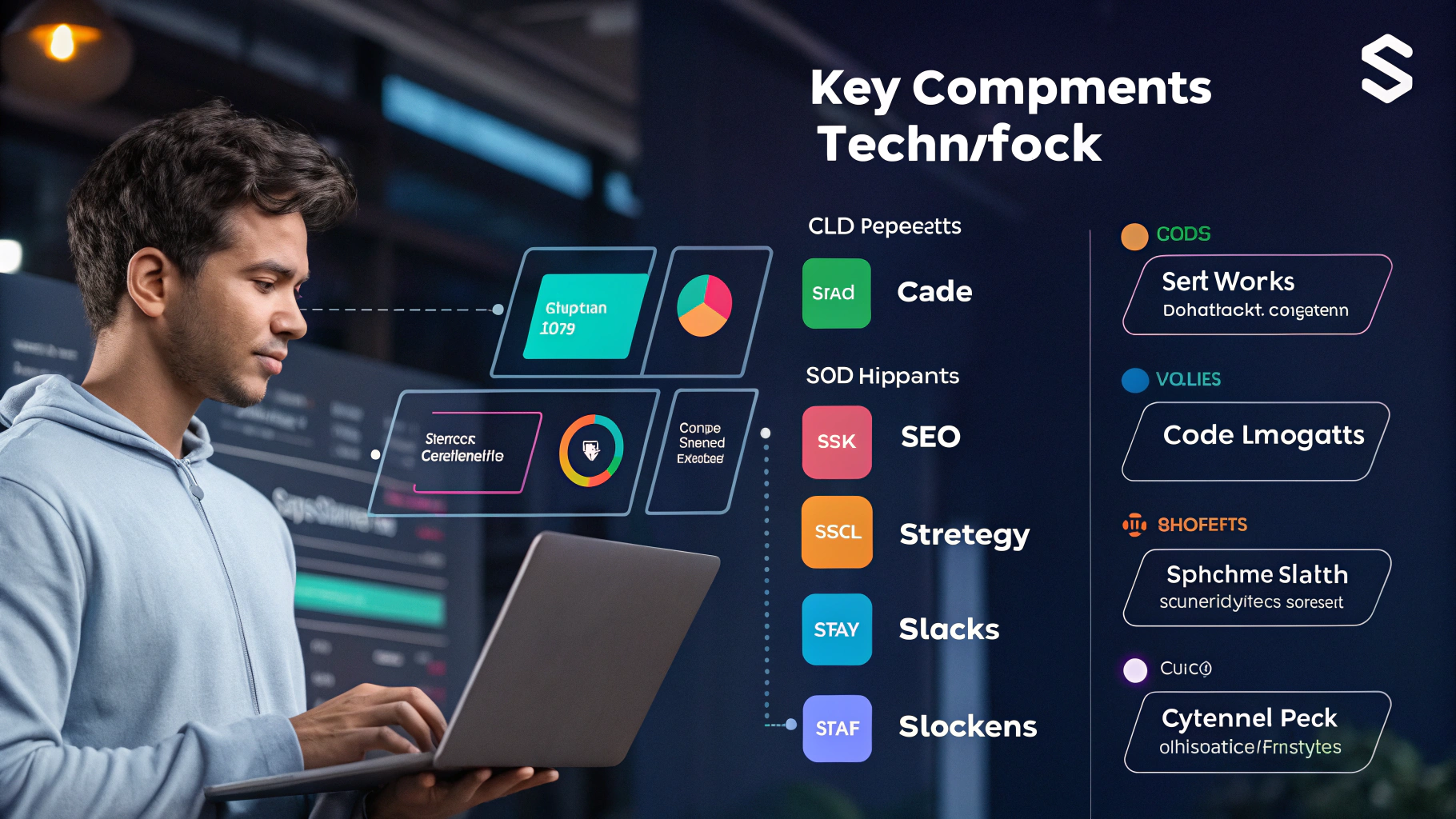Ride the SEO Wave: Dominate Google Search Rankings!
How is it possible that 75% of users never scroll past the first page of Google, yet most businesses spend less than 10% of their marketing budget on search optimization? This staggering disconnect represents both a challenge and an incredible opportunity for savvy marketers. In today’s digital landscape, achieving SEO Ascent isn’t just a marketing tactic—it’s a business imperative that directly impacts your bottom line. The companies that understand how to climb search rankings systematically capture the lion’s share of organic traffic, leads, and ultimately revenue.
Why It Matters

The digital marketplace has become increasingly competitive, with over 1.13 billion websites vying for attention online. What’s more telling is that 68% of online experiences begin with a search engine, making Organic Visibility the primary gateway to your business. Recent studies show that websites appearing in the top three positions capture nearly 60% of all clicks, while positions 4-10 share only about 40% of remaining traffic.
For businesses, this translates directly to revenue: companies with strong SEO strategies report an average ROI of 275%, dramatically outperforming traditional marketing channels. Moreover, SEO-generated leads have a 14.6% close rate, compared to just 1.7% for print or direct mail campaigns. In economic terms, the difference between page one and page two rankings can represent tens or even hundreds of thousands of dollars in lost opportunity.
Core Concepts
Understanding the foundations of SEO Ascent requires grasping three interconnected pillars: technical infrastructure, content relevance, and authority building.
Think of your website as a retail store. Technical SEO represents the building’s foundation, electrical wiring, and plumbing—invisible to customers but critical for operation. A site with excellent technical SEO loads quickly (53% of mobile users abandon sites that take longer than 3 seconds to load), renders properly across devices, and has clean, crawlable architecture that search engines can easily navigate.
Content relevance is like your store’s merchandise—what brings people through the doors. Google’s algorithms have evolved to understand context, intent, and semantic relationships between words. This means creating content that genuinely answers user questions rather than simply stuffing keywords. The difference between mediocre and exceptional content often determines whether you achieve Search Dominance.
Authority building, the third pillar, resembles your store’s reputation in the community. Through quality backlinks, brand mentions, and social signals, Google gauges your site’s trustworthiness and expertise. A recent industry study revealed that 99.2% of all top-ranking content has at least one backlink, highlighting the continued importance of this aspect.
Strategy or Implementation Guide
Step 1: Conduct a Comprehensive SEO Audit
Begin with a thorough assessment of your current position. This should include:
- Technical analysis (site speed, mobile-friendliness, crawlability)
- On-page content evaluation
- Competitor analysis
- Backlink profile assessment
- Keyword positioning
Free tools like Google Search Console and PageSpeed Insights provide valuable starting data, while paid tools like Semrush or Ahrefs offer deeper insights.
Step 2: Develop a Keyword Strategy
Identify terms your audience actually searches for, focusing on:
- Search volume (popularity)
- Competition difficulty
- Business relevance
- User intent (informational, navigational, transactional)
Prioritize long-tail keywords that combine reasonable volume with lower competition. For example, rather than targeting “digital marketing” (highly competitive), focus on “digital marketing for healthcare clinics in Chicago” (more specific and attainable).
Step 3: Optimize Technical Foundation

Implement these critical technical improvements:
- Increase page speed (compress images, leverage browser caching, minimize code)
- Ensure mobile responsiveness
- Fix crawl errors and broken links
- Implement schema markup
- Create and optimize XML sitemaps
- Secure your site with HTTPS
Step 4: Create Strategic Content
Develop content that serves both users and search engines:
- Craft compelling meta titles and descriptions
- Structure content with proper heading hierarchy (H1, H2, H3)
- Include your focus keyword naturally in the first paragraph
- Create comprehensive, authoritative content (studies show top-ranking pages average 1,890 words)
- Incorporate relevant visuals, videos, and interactive elements
- Update existing content regularly
Step 5: Build Authority Systematically
Implement a sustainable link-building strategy:
- Create linkable assets (research, tools, infographics)
- Leverage guest posting on relevant industry sites
- Reclaim unlinked brand mentions
- Develop relationships with industry influencers
- Participate in relevant online communities
Benefits
Implementing a robust SEO Ascent strategy delivers multiple advantages:
- Sustainable Traffic Growth: Unlike paid advertising that stops when you stop paying, SEO builds momentum over time, creating a compounding effect.
- Enhanced Credibility: 49% of marketers report that Organic Visibility delivers the highest ROI of any marketing channel.
- Higher Conversion Rates: Search traffic converts at 14.6% on average compared to 1.7% for outbound methods.
- Better User Experience: SEO improvements often align with usability improvements.
- Competitive Advantage: Only 30% of small businesses actively invest in SEO, creating opportunity for those who do.
Case Study
A mid-sized e-commerce company selling kitchen appliances was struggling with declining traffic and sales. Their initial metrics showed:
- 15,000 monthly organic visitors
- 1.8% conversion rate
- $45 average order value
- $12,150 monthly revenue from organic search
After implementing our systematic SEO Ascent strategy:
- Technical fixes improved site speed by 42%
- Content optimization increased organic traffic to 38,000 monthly visitors
- Enhanced product pages raised conversion rate to 2.7%
- Strategic internal linking improved average order value to $58
- Result: $59,436 monthly revenue from organic search (389% increase)
Tools & Resources
- Keyword Research: Semrush, Ahrefs, Moz Keyword Explorer
- Technical SEO: Screaming Frog SEO Spider, GTmetrix, Google Search Console
- Content Optimization: Clearscope, Surfer SEO, MarketMuse
- Link Building: BuzzStream, Hunter.io, HARO
- Analytics: Google Analytics, Hotjar, Looker Studio
Common Mistakes to Avoid
- Ignoring Mobile Experience: Mobile represents 63% of all Google’s US organic search traffic.
- Neglecting Page Speed: Each one-second delay in page loading reduces conversions by 7%.
- Over-optimization: Keyword stuffing and excessive link building can trigger penalties.
- Creating Thin Content: Short, low-value content rarely achieves Search Dominance.
- Failing to Analyze Competitors: Understanding what works for successful competitors provides valuable shortcuts.
Future Trends
The SEO landscape continues evolving rapidly. Watch for:
- AI-driven search experiences (Google’s SGE changing result formats)
- Voice search optimization (40% of US adults now use voice search daily)
- Visual search advancement (Google Lens performing 8 billion searches monthly)
- E-A-T principles gaining even more importance with AI content proliferation
- Zero-click search results forcing brands to optimize featured snippets
Conclusion
Achieving SEO Ascent isn’t a one-time effort but a strategic, ongoing process that delivers compounding returns. By following the systematic approach outlined in this guide, you’ll not only improve rankings but also enhance user experience and drive meaningful business growth. The digital landscape rewards those who invest in lasting Organic Visibility rather than chasing algorithm shortcuts.
Take the first step today: conduct a basic SEO audit using the free tools mentioned, identify your three biggest opportunities, and begin implementing changes systematically. Remember, SEO is both an art and a science—one that pays dividends to those committed to excellence.
FAQs
How long does it take to see SEO results?
Most businesses begin seeing meaningful results within 3-6 months, with more competitive industries potentially taking 6-12 months for significant movement.
Is SEO still relevant with the rise of social media marketing?
Absolutely. While social media drives awareness, SEO captures high-intent traffic actively searching for solutions you offer, typically delivering higher conversion rates.
How much should I budget for SEO?
Most successful small to mid-sized businesses invest between $1,000-$5,000 monthly, while enterprise-level companies often allocate $10,000+ monthly for comprehensive programs.
Can I do SEO myself or should I hire an expert?
Basic SEO fundamentals can be implemented in-house, but competitive industries typically require specialized expertise to achieve significant rankings improvement.
How does AI content affect SEO strategy?
AI tools can enhance content creation efficiency, but Google prioritizes helpful, experience-driven content. The most effective approach combines AI assistance with human expertise and original insights.

